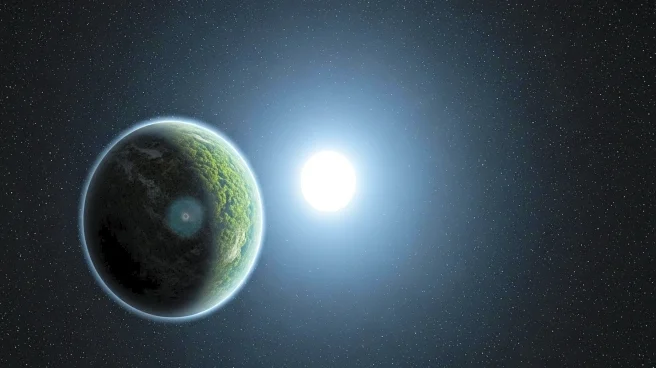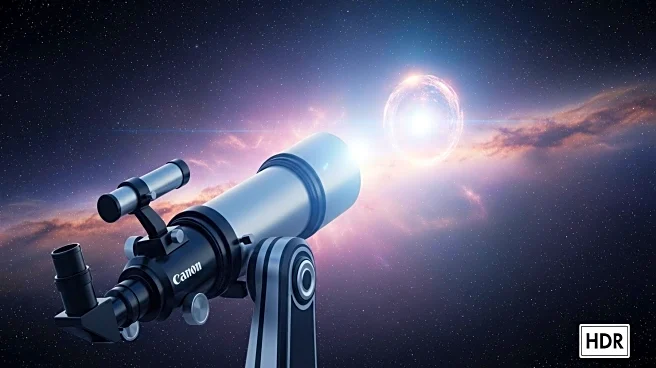What's Happening?
Astronomers are investigating the possibility of life on planets orbiting white dwarfs, which are remnants of stars like the sun after they exhaust their nuclear fuel. These stars, despite their small size and faintness, could host planets within a habitable zone where liquid water might exist. The research, led by a professor of astronomy at the University of Wisconsin-Madison, highlights the challenges and potential of finding life in such environments. The habitable zone around a white dwarf is much closer than that around a sun-like star, raising questions about tidal heating and the survival of water on these planets. Advanced telescopes, such as the James Webb Space Telescope, are being used to detect signs of life by analyzing the atmospheres of these planets.
Why It's Important?
The discovery of habitable planets around white dwarfs could significantly expand the scope of environments considered viable for life beyond Earth. With an estimated 10 billion white dwarfs in the galaxy, these stellar remnants could become key targets in the search for extraterrestrial life. The research challenges traditional views of habitability, suggesting that life could persist even after a star's death. This could have profound implications for our understanding of life's resilience and adaptability, potentially influencing future space exploration and the search for life in the universe.
What's Next?
Researchers will continue to refine techniques for detecting planets around white dwarfs, focusing on overcoming the challenges posed by their small size and faintness. The use of advanced telescopes will be crucial in identifying and characterizing these planets. If successful, this could lead to a new era in the search for extraterrestrial life, with white dwarfs becoming a primary focus for astronomers. The findings could also prompt further studies into the migration of planets and the conditions necessary for sustaining life in such unique environments.
Beyond the Headlines
The exploration of life around white dwarfs raises ethical and philosophical questions about the definition of habitable environments and the potential for life in seemingly inhospitable conditions. It challenges the anthropocentric view of life and encourages a broader perspective on the possibilities of life in the universe. This research could also influence cultural and scientific narratives about the future of our own solar system and the potential for life to endure beyond the lifespan of the sun.











